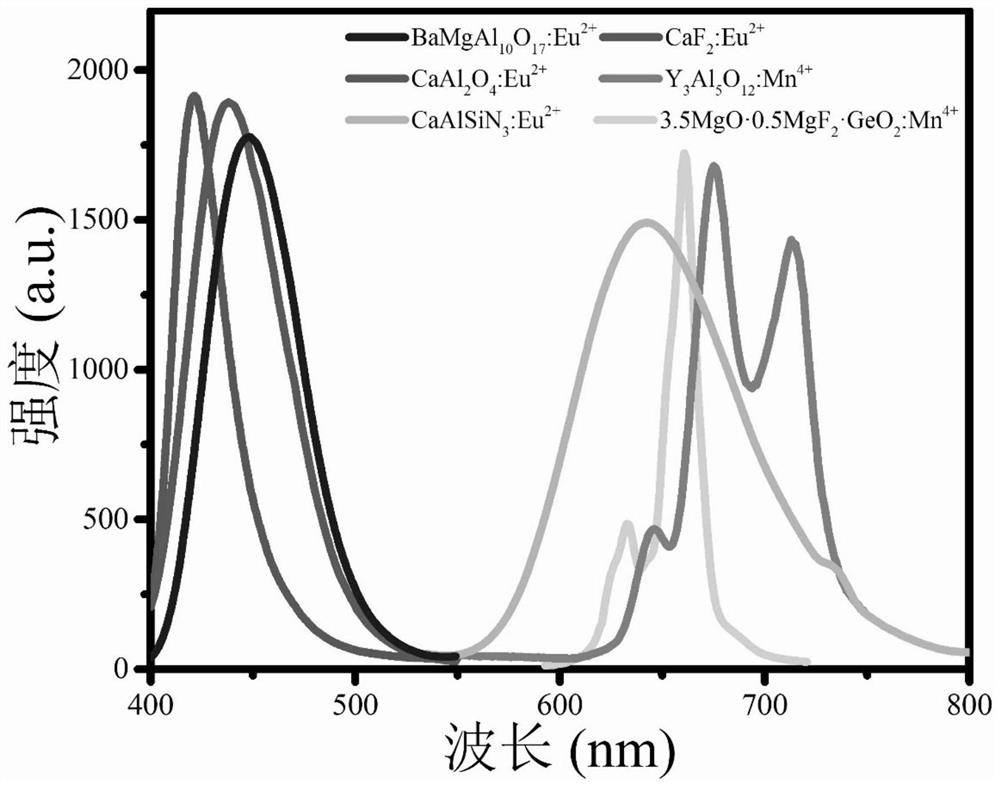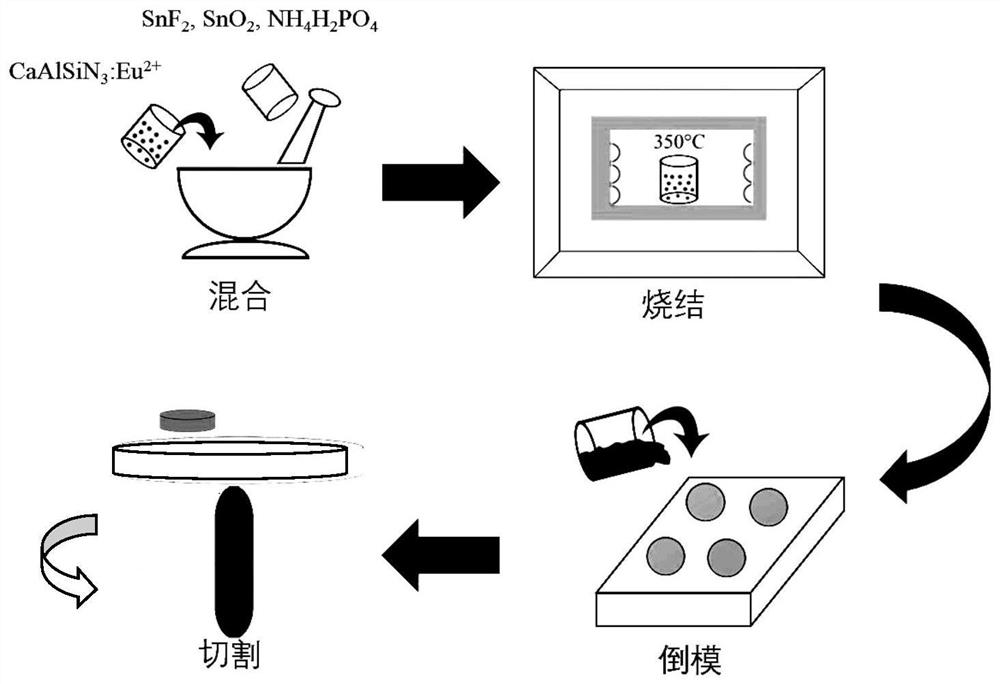Red and blue light glass ceramic light conversion component, preparation method and plant lamp
A technology of glass ceramics, red and blue light, applied in the field of plant lights, can solve the problems affecting the quality of the light source, the luminous intensity, the aging of the packaging material, etc.
- Summary
- Abstract
- Description
- Claims
- Application Information
AI Technical Summary
Problems solved by technology
Method used
Image
Examples
Embodiment 1
[0076] Blue phosphor BaMgAl 10 o 17 :Eu 2+ Preparation: According to the substance mass ratio of each element in the molecular formula of the fluorescent powder, weigh barium carbonate powder, magnesium oxide powder, aluminum oxide powder and europium oxide powder, mix the above-mentioned raw materials after weighing, place at high temperature The temperature of the tube furnace was raised to 800°C and kept for 1 hour. After natural cooling, it was taken out, and then placed in a high-temperature tube furnace with a flow rate of 80 mL / min mixed gas (the molar ratio of hydrogen to nitrogen was 5:95) and heated to 1575°C and keep it warm for 8 hours, take it out after natural cooling, and then crush it to get the blue phosphor BaMgAl 10 o 17 :Eu 2+ .
Embodiment 2
[0078] Blue phosphor CaF 2 :Eu 2+ Preparation: According to the substance mass ratio of each element in the phosphor molecular formula, weigh calcium difluoride powder and europium trioxide powder, mix the above-mentioned raw materials after weighing, place in a mixed gas flow rate of 80mL / min (The molar ratio of hydrogen to nitrogen is 5:95) high-temperature tube furnace is heated to 800°C and kept for 4 hours, then taken out after natural cooling, and then crushed to obtain the blue phosphor CaF 2 :Eu 2+ .
Embodiment 3
[0080] Blue phosphor CaAl 2 o 4 :Eu 2+ Preparation: According to the mass ratio of each element in the phosphor molecular formula, weigh calcium carbonate, aluminum oxide and europium oxide powder, mix the above-mentioned raw materials evenly after weighing, and place the flow rate at 80mL / min A high-temperature tube furnace with mixed gas (the molar ratio of hydrogen to nitrogen is 5:95) is heated to 1300°C and kept for 4 hours, taken out after natural cooling, and then crushed to obtain the blue phosphor CaAl 2 o 4 :Eu 2+ .
PUM
| Property | Measurement | Unit |
|---|---|---|
| melting point | aaaaa | aaaaa |
| melting point | aaaaa | aaaaa |
| fluorescence | aaaaa | aaaaa |
Abstract
Description
Claims
Application Information
 Login to View More
Login to View More - R&D
- Intellectual Property
- Life Sciences
- Materials
- Tech Scout
- Unparalleled Data Quality
- Higher Quality Content
- 60% Fewer Hallucinations
Browse by: Latest US Patents, China's latest patents, Technical Efficacy Thesaurus, Application Domain, Technology Topic, Popular Technical Reports.
© 2025 PatSnap. All rights reserved.Legal|Privacy policy|Modern Slavery Act Transparency Statement|Sitemap|About US| Contact US: help@patsnap.com



